By B. Poulsen
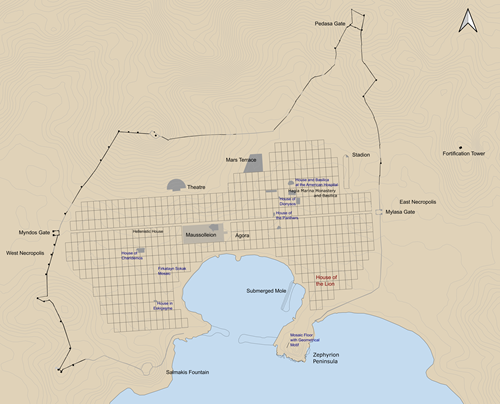 Fig. 1. Plan of Halikarnassos with indication of the approximate site of the mosaic with a lion (N. Bargfeldt and F.S. Nielsen).
Fig. 1. Plan of Halikarnassos with indication of the approximate site of the mosaic with a lion (N. Bargfeldt and F.S. Nielsen).
The mosaic in the photo
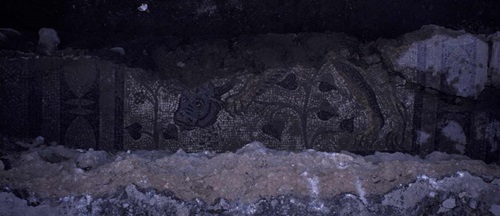 Fig. 2. Photo made when the mosaic was found (R. Piercy).
Fig. 2. Photo made when the mosaic was found (R. Piercy).
The photo shows a mosaic with the lower part of a panel depicting a lion and some borders on both sides. The upper half of the panel is missing, and the part below the panel is covered by soil. The colours are white, yellow, blue, light blue, red, purple, dark green.
The panel with a figural representation is delimited by borders on all three preserved sides, the larger part is seen to the left (Fig. 3). The most prominent border is a white bead-and-reel on a blue background. Below the panel a border with five rows of white tesserae and the beginning of a blue (a bead-and-reel?) may be distinguished. The panel itself was lined by a monochrome blue triple fillet.
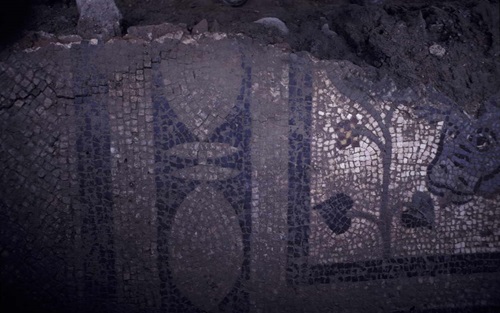 Fig. 3.Detail of the left borders of the mosaic (R. Piercy).
Fig. 3.Detail of the left borders of the mosaic (R. Piercy).
Even though the upper part of the panel is missing the motif may be clearly identified. It shows a lion walking or leaping towards the left. The lion is putting its right paw on the head of a bull (Fig. 4). Blood is dripping from the neck of the bull and its tongue is realistically hanging out of its mouth. The drama of the incident is further accentuated by a landscape indicated by trees and bushes, one to the left and one below the lion or standing behind it (Fig. 2). No ground line is indicated.
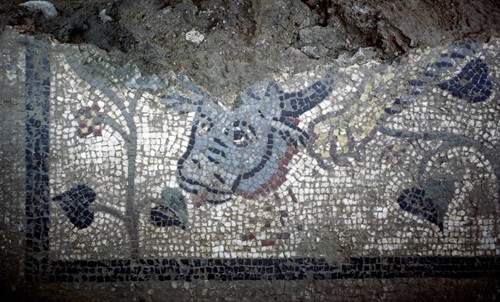 Fig. 4.Detail of the mosaic with the head of a bull (R. Piercy).
Fig. 4.Detail of the mosaic with the head of a bull (R. Piercy).
The background is white, while the lion is made with yellow tesserae with a red and a purple outline, and the fur is indicated by blue tesserae. The indication of shadow on its right hind leg is made with blue tesserae and so are the claws on the paws. The head of the bull is made with two shades of light blue/grey tesserae outlined with blue. The tongue is red as is the blood dripping from its neck. The eyes are indicated with white tesserae with a blue pupil made with more tesserae. The plants are made with one row of red tesserae. The bush to the left has two solid blue heart-shaped leaves and two flowers made with red and yellow tesserae. The bush below the lion also has heart-shaped leaves most of them being made with half blue/half light blue or dark green tesserae and at least one flower made with yellow and red may be distinguished.
Comparisons
The motif of a panther/leopard or a lion walking with the head of its prey in its mouth or putting its paw on the head of the prey is widely distributed in the mosaics of the Roman Empire. A mosaic in the peristyle of the House of Dionysos in Paphos shows that the motif forms part of a munus venationum. In this depiction, a leopard is walking with the head of a donkey in its jaws, and the body of the donkey is lying headless behind the leopard, leaving no doubt about the cruel incident that took place immediately before. The motif appears to be widely distributed but all the preserved specimens are mostly limited to the abbreviated depiction with a lion/leopard carrying the head of their prey in their jaws. A tiger is also carrying the head of a donkey in an octagon in the Baths of Philippi in northern Greece, and again the headless donkey is depicted, now shown above the tiger.
The representation in Halikarnassos is presumably slightly different since the beast seems to put its paw on the head of the bull. A close parallel for this variant is at hand in Hanghaus 2, Wohneinheit 3 in Ephesos, now dated to the mid-2nd century AD. The mosaic depicts a lion likewise turned to the left and putting its paw on the head of a bull. It offers the best preserved parallel for the motif in Halikarnassos, but there are a few further representations preserved in other parts of the late Roman world. There is also evidence for this motif in the wall-painting from a tomb in the Via Laurentina in Ostia dated to the mid-2nd century AD.
It appears that the motif, a beast with the head of a herbivore, was widely distributed in the mosaic floors of the Imperial period from the mid-2nd to the 3rd century AD. These depictions are clearly referring back to the Roman munus venationumfor which we have, so far, no other evidence in Halikarnassos. The existence of such games is, however, also indicated by depictions in the House of Charidemos. In Room A, Ch. T. Newton revealed a mosaic floor with four panels, each depicting two or three animals. One of the panels represented a lion and a bull rushing at each other on either side of a tree. Although no arena has been identified in Halikarnassos, gladiatorial games (munera) are attested by both inscriptions and reliefs. They may, of course, have taken place either in the stadium or the theatre.
Style and date
The style is very distinct and characteristic. The hind paws of the lion seem soft and rather clumsy, the claws are clearly indicated on the front paws, the fur is indicated with a few lines of dark red tesserae, and the setting is indicated by a few stylized trees or flowers. The style is careless but lively, and the style may best be compared to the representations of the mosaic floors of the House of Charidemos. These mosaics should be dated to the mid-5th century AD and this date also seems appropriate for the lion mosaic now lost. The presence of a very similar motif in Ephesos during the 2nd century would indicate that a pattern for the lion-bull-motif circulated in western Asia Minor from this period onwards. The occurrence of this motif in ancient Halikarnassos as late as the 5th century AD attests to its endurance and popularity still in Late Antiquity.
Fragments from the lion mosaic in Bodrum Museum
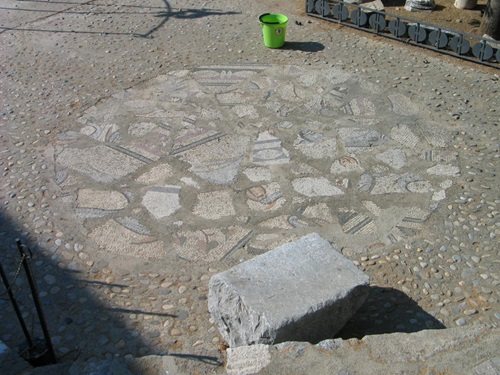 Fig. 5. Fragments of floor mosaics placed in random order near the Snake Tower (B. Poulsen)
Fig. 5. Fragments of floor mosaics placed in random order near the Snake Tower (B. Poulsen)
I first thought that all evidence for this mosaic was now sadly lost but my studies of some fragments – now out of context and in the Bodrum Museum of Underwater Archaeology – have convinced me that at least two fragments of the mosaic have survived. A few years ago, about 40 fragments of mosaics, large and small, had been laid down in random order in the upper yard near the Snake Tower (Fig. 5). The fragments are said to “come from inside the city walls”. When I first studied these fragments in 2005, I noticed two fragments that were slightly different from the others. One fragment (Fig. 6) shows a white bead-and-reel on a blue background bordered to the right by four rows of white, and to the left five rows of white and a small part of a figural motif made with yellow, red, and purple on a white ground. This fragment is clearly identical with a part behind the lion which already had cracks corresponding exactly to the size of the fragment (see Fig. 2). It turns out that it is made in the same way both as to colours, the number of rows of tesserae, and the lying of the tesserae as the corresponding part of the lion mosaic. The preserved fragment even shows a small part of the tail of the lion, yellow tesserae lined with red along the upper line of the tail.
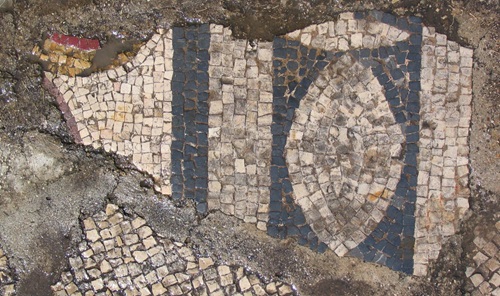 Fig. 6. Fragment with white bead-and-reel on a blue background and part of panel with the tail and outline of the back of the lion (B. Poulsen).
Fig. 6. Fragment with white bead-and-reel on a blue background and part of panel with the tail and outline of the back of the lion (B. Poulsen).
Fragments to be attributed to a floor mosaic
The remaining number of fragments may not be attributed to any part of the mosaic photographed by R. Piercy. However, since the two fragments mentioned above have been placed together with 21 other fragments, it seems possible that they formed part of another mosaic floor of the same building. Due to overlap of borders, motifs, colours, and size of tesserae, the other fragments may have belonged to the same floor. The fragments will be published in detail later and only a few fragments will be illustrated below.
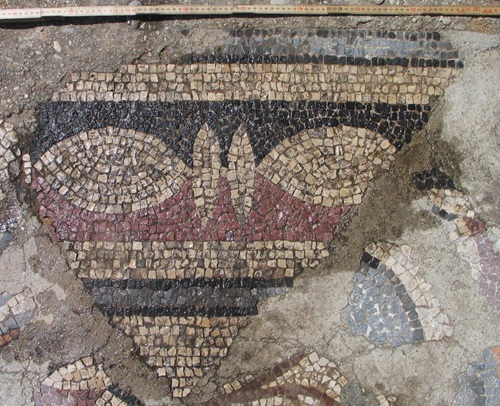 Fig. 7. Fragment with part of a white bead-and-reel on a blue and a purple background (B. Poulsen).
Fig. 7. Fragment with part of a white bead-and-reel on a blue and a purple background (B. Poulsen).
At least three fragments show part of a white bead-and-reel on a blue and a purple background. This type of border occurs frequently during Late Antiquity in Halikarnassos and elsewhere. It is very similar to a border in Tomb 8 in the necropolis at the Myndos Gate in which likewise a white bead-and-reel on a blue and a purple background borders three figural panels. A border similar to that on the fragments was also used in the House of Charidemos in Room D, where it framed a medallion. This way of making the border with two different colours in the background is typical for Halikarnassos.
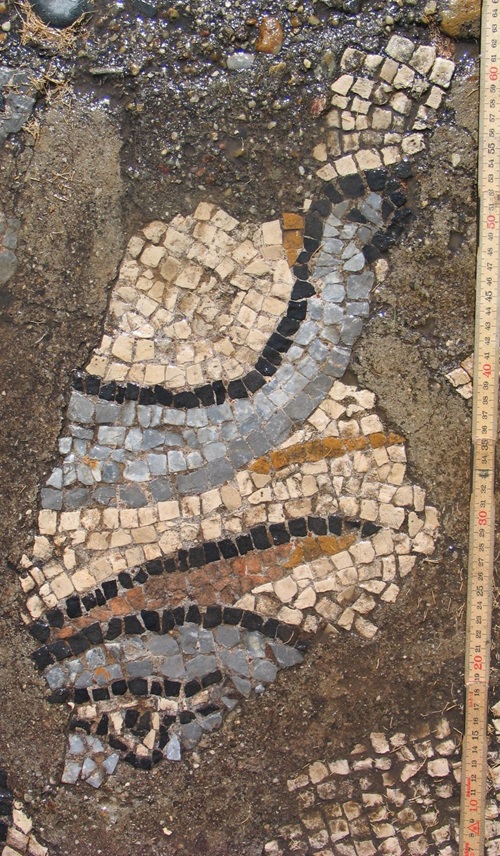 Fig. 8. Fragment with head and body of dolphin (B. Poulsen)
Fig. 8. Fragment with head and body of dolphin (B. Poulsen)
Other fragments show various parts of dolphins, perhaps from a border. One fragment shows parts of two dolphins. On the lower part a small part of a dolphin head with an eye and a top-fin can be seen. Above this is seen a part of a tail of another dolphin.
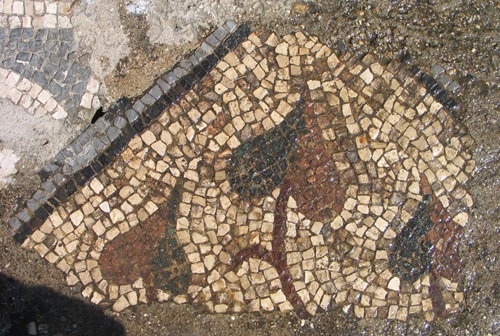 Fig. 9. Fragment of floral border (B. Poulsen)
Fig. 9. Fragment of floral border (B. Poulsen)
Among these fragments are also four showing plants or vegetal scrolls with dark red stems and heart-shaped leaves in two colours. One fragment suggests that these fragments may stem from a corner of a mosaic floor. Of the scroll remains three ivy leaves attached to a dark red stem. The leaves are half red half dark green.
The date of the type and style of these fragments would correspond well that of the lion panel, sometime during the 5th century AD.
Publications and Preliminary Reports
Carlsen, J. 2014: Gladiators in ancient Halikarnassos, in L. Karlsson, S. Carlsson & J. Blid Kullberg (eds.), Λαβρυς. Studies presented to Pontus Hellström, Uppsala, 441-450.
Clarke, J.R. 2003: Art in the lives of ordinary Romans. Visual representation and non-elite viewers in Italy, 100 B.C. - A.D. 315, Berkeley.
Hinks, R.P. 1933: Catalogue of the Greek, Etruscan, and Roman Mosaics and Paintings in the British Museum, London.
Kondoleon, C. 1995: Domestic and Divine. Roman Mosaics in the House of Dionysos, Ithaca and London.
Krinzinger, F. (ed.) 2002, Das Hanghaus 2 von Ephesos. Studien zu Baugeschichte und Chronologie, Archäologische Forschungen 7, Wien.
Newton, C.T. 1862: A History of Discoveries at Halicarnassus, Cnidus, and Branchidae, London.
Poulsen, B 2012: Identifying mosaic workshops in late antiquity: epigraphic evidence and a case study, in T.M. Kristensen & B. Poulsen (eds.), Ateliers and Artisans in Roman Art and Archaeology, JRA Suppl. 92, Portsmouth, 129-144.
Scheibelreiter, V. 2005: Löwe und Stierkopf. Zu einem Mosaikbild aus dem Hanghaus 2 von Ephesos, in Synergia. Festschrift für D. Krinzinger, eds. B. Brandt, V. Gassner, S. Ladstätter, Wien, 309-317.
Scheibelreiter-Gail, V. 2011: Die Mosaiken Westkleinasiens, SoSchrÖAI 48, Wien.
Waywell, S.E. 1979: Roman Mosaics in Greece, AJA 83, 293-321.